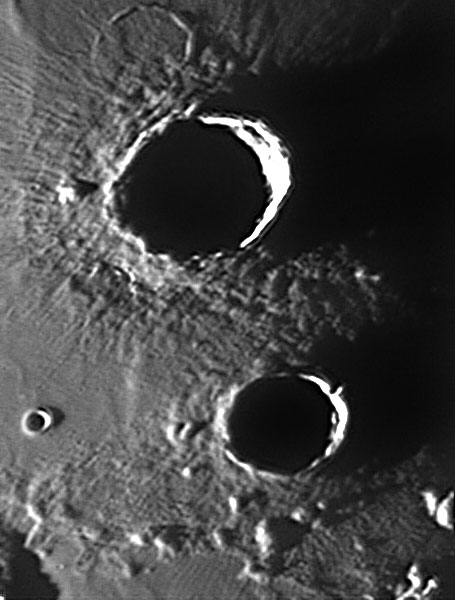|
|||||||
|
Aristillus is a prominent lunar impact crater that lies in the lunar mare at the southeast of Mare Imbrium. Directly to the south is the smaller Autolycus crater, while to the southwest is the large Archimedes crater. The area of mare to the southwest is named the Sinus Lunicus. To the northwest are the Theaetetus and Cassini craters. The rim of Aristillus crater has a wide, irregular outer rampart of ejecta that is relatively easy to discern against the smooth surface of the surrounding mare. The crater impact created a ray system that extends for a distance of over 600 kilometers. The rim is generally circular in form, but possesses a slight hexagonal shape. The inner walls of the rim have a terraced surface, and descend to a relatively rough interior that has not been flooded with lava. In the middle of the crater is a set of three clustered peaks, which rise to a height of about 0.9 km. In the northern outer ramparts of Aristillus is a ghost-crater remnant. This is the protruding rim of an old crater that has been almost completely submerged by the lava flows of the surrounding Mare Imbrium. The southern end of the rim has been covered by the ejecta from Aristillus. |
|
||||||



 Aristillus
Aristillus